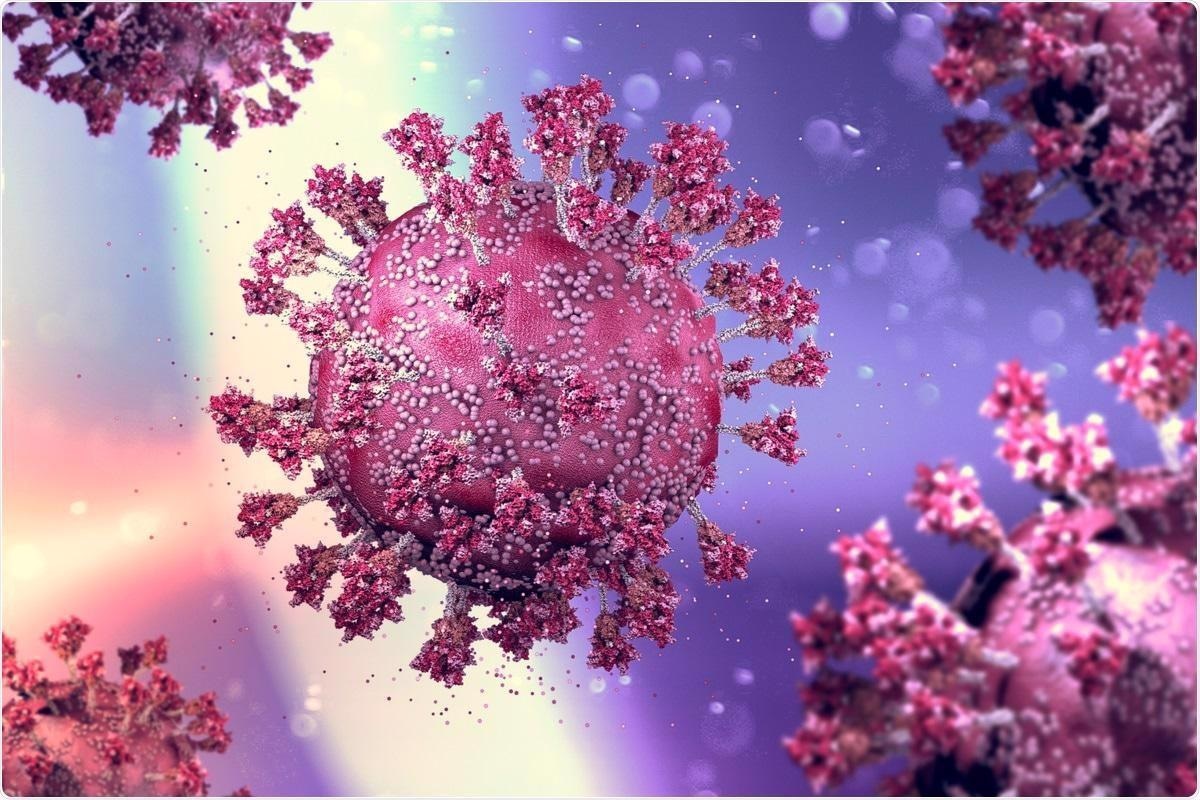Researchers in Germany, based on their recent study published in the journal ChemBioChem, have proposed that the elevated occurrence of positively charged amino acids in specific domains of the severe acute respiratory syndrome coronavirus 2 (SARS‑CoV‑2) Omicron variant spike protein improves viral binding to cellular negatively charged receptors aiding in enhanced infectiousness.
SARS-CoV-2, due to its high mutation potential, has given rise to several mutants accompanied by increased viral fitness and enhanced viral infectivity compared to the wild type. As a result, these new variants quickly replaced the previously prevailing mutants all across the globe.
The latest SARS-CoV-2 variant, Omicron, contains more than 60 genetic mutations compared to wild type and the related reports indicate an even enhanced infectivity.
The German team, therefore, conducted the current study based on chemical modeling and simulations to understand how these mutations would alter the interaction of the Omicron variant with the host cells of the respiratory tract.

Study: Charge Matters: Mutations in Omicron variant favor Binding to Cells. Image Credit: Naeblys / Shutterstock.com
Background
The first step for SARS-CoV-2 entry into the cell is the interaction of virus spike with the heparan sulfate proteoglycans (HSPG), a proteoglycan polysulfate on the cell surface, even before interacting with cellular ACE2 receptor. The HSPG consists of unbranched, negatively charged heparan sulfate (HS) attached to cell surface proteins.
A previous report suggests that the initial binding is related to the electrostatic interaction between anionic HSPG and cationic patches on the viral proteins.
The fact that the electrostatic interactions could drive the initial interaction of the virus with the host cells has mostly been underscored by most recent studies that mainly focus on viral interaction with the host ACE2 receptor.
A study that involved enzymatic removal of the HSPG from cell surfaces showed a significant reduction in the SARS-CoV-2 infection. In addition, highly charged electrolytes have also been shown to compete and block the initial interaction of HSPG with the virus. These reports clearly suggest the role of initial electrostatic interaction between viruses and the host cells.
Amino acids
On analyzing all 32 mutations in the spike sequence Omicron variant, the team observed that the positive charge increased by +9 in the altered amino acid sequence of the Omicron variant, compared to the wild type SARS-CoV-2.
The previous mutational event leading to the emergence of the Delta variant was associated with an increase of +4 positive charge. The conservation and enrichment of such mutations in virus variants strongly indicate a selective advantage in initial binding to the host cell.
Polysulfate
Electrostatic potential mapping shows the location of the cationic patch at some distance away from the receptor-binding motif (RBM) in wild-type RBD. In Delta variant RBD, this cationic patch becomes larger because of the two charged mutations L452R and T478K.
Similarly, in Omicron RBD, in addition to this patch, a new cationic patch is formed (located right on the RBM) due to three neighboring charged mutations (Q493R, Q498R, and Y501H). Thus the new variant is expected to bind more strongly to the negatively charged HSPGs present on the cell surface.
The team confirmed this hypothesis using simulations of all-atom molecular dynamics (MD). Since Omicron is modified to own two cationic patches on RBD, the polyglycerol sulfate can bind to these two positions bestowing an improved binding affinity on the Omicron variant, and therefore more infectiousness.
Other mutations
Mutation P681R has been shown to facilitate furin-mediated cleavage of the spike protein in the Delta variant. Furin enzyme from the host organism cleaves the spike protein into the S1 and S2 subunits and primes fusion of the virus envelope with the host cell membrane.
The team observed a similar mutation P681H, next to the -RRAR- furin cleavage site of the Omicron variant that might signal towards another modification for an enhanced infection potential of Omicron.
As per the team, more experimental studies will be necessary to characterize the consequences of the mutation P681H in the Omicron variant.
The team also hints towards the possibility of other mutations in Omicron RBD, which may enhance the second step of binding, i.e., its interaction with the ACE2 receptor. This is because certain mutations in the RBM (such as K417, S477, T478, E484, and N501) that have been shown to enhance viral binding to ACE2, are also present in the Omicron RBM.
“We propose based on a chemical rational that the elevated occurrence of positively charged amino acids in certain domains of the spike protein (Delta: +4; Omicron: +5 vs. wild type) increases binding to cellular polyanionic receptors, such as heparan sulfate due to multivalent charge-charge interactions. This observation is a starting point for targeted drug development”, concludes the team.